Journal
Sharing emotions: The words that say it all.
Every spring, for the Primeurs, tasters, sommeliers, experts, brokers, merchants, importers, distributors and journalists from all over the world travel to Léognan, along the narrow roads leading to the highest croup on the Left Bank, where the exceptional terroir of Château Haut-Bailly lies.
Without this terroir, its geographical location, its geological site, the pedological features of its hillside, its exposure and the unique heritage of its vines, some of which are over a hundred years old, the vineyard would not produce the fine grapes that give Haut-Bailly wine its precious character.
And without the passionate teams who express and sublimate it, these women and men who, in the vineyards as in the cellar, are the artisans of a style that is all truth and authenticity. This identity remains unchanged throughout the years – the conveniences and excesses of fashion pass, only style remains, and that of Haut-Bailly is truly timeless, and so contemporary.
We therefore asked a linguist*, using last April’s tasting comments as a corpus, to identify the formants of the perceived image of the 2023 vintage, to extract the main lines and, beyond that, to indicate what this image says about Haut-Bailly.
Purity, finesse, elegance, precision, fruit, flavour, subtlety, class: this semantic portrait of Haut-Bailly, as drawn up by the twenty or so most notorious ‘signatures’ of the 2023 tasting, undeniably reflects the demanding winegrowing and winemaking vision shared by the estate’s teams.
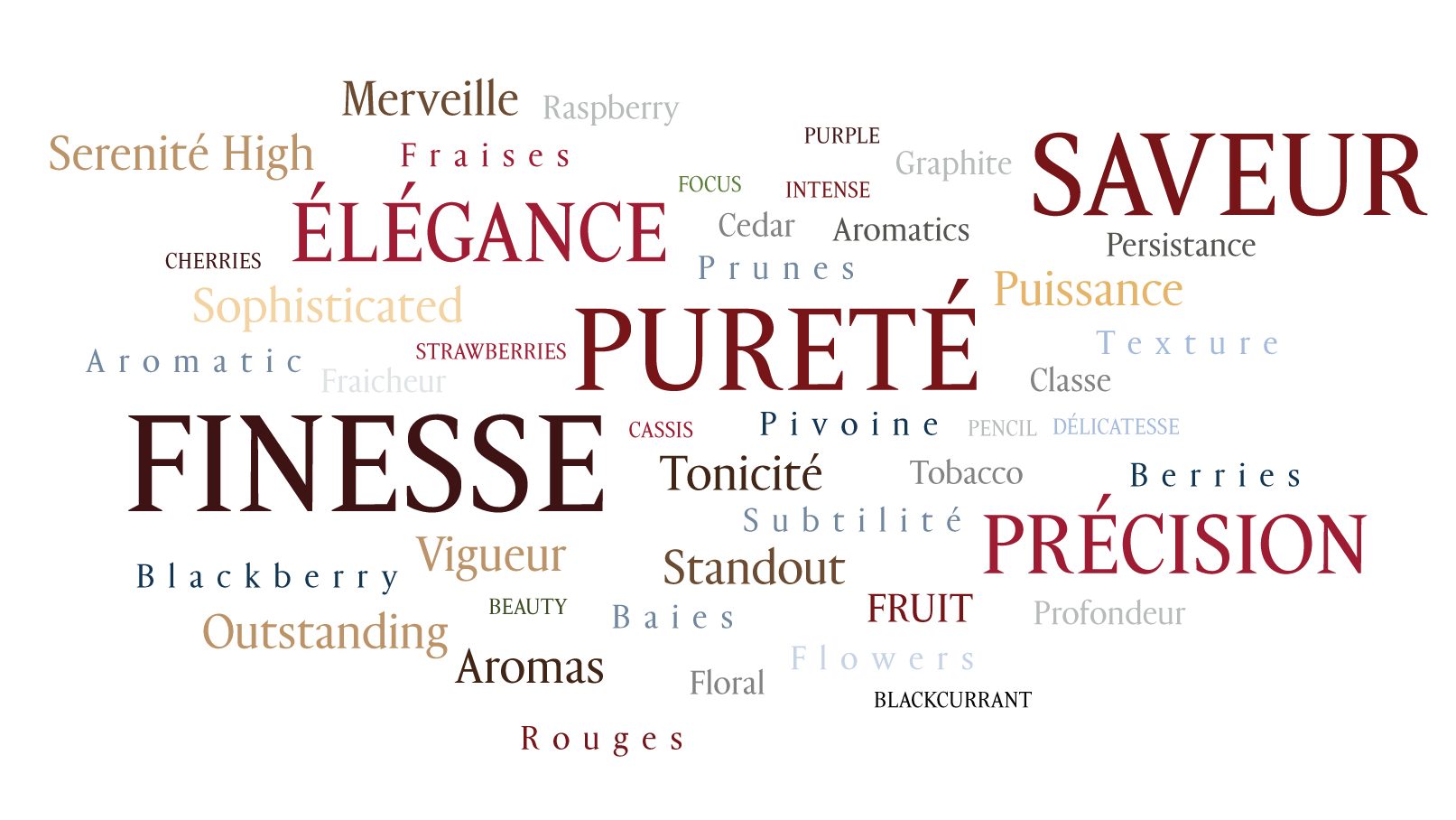
There are many noble attributes on which most of the tasters agree, albeit from different origins, cultures and languages
Precision, as revealed by a “precise attack”, a “precise bouquet”, a “precise wine”, “a very precise, sinewy, lithe palate” or the fact that “the palate is dense, focused and precise”.
Finesse, multi-dimensional, as underline French critics as “fine woody nuances that work behind the scenes“, ”the attack that announces the wine with delicacy”, “a version that is all finesse, expressive, immediately charming, undeniably slender”, delivering “a subtle and discreet wine”. Finesse is no less adulated by foreign journalists (as Haut-Bailly exports 90% of its production to over 80 countries): “there’s a vibrancy paired with elegant, fine tannins, and purity and length”, “much more about finesse than power”, “so effortless” with “chalky tannins that are supple with finesse and grain”
Purity which, as we have seen, is the central attribute of a “linear, pure wine” or “extremely pure and delineated”, giving rise to “an incredible sense of purity and elegance” with “the purity of fruit here” and also “purity of rose bud and liquorice”.
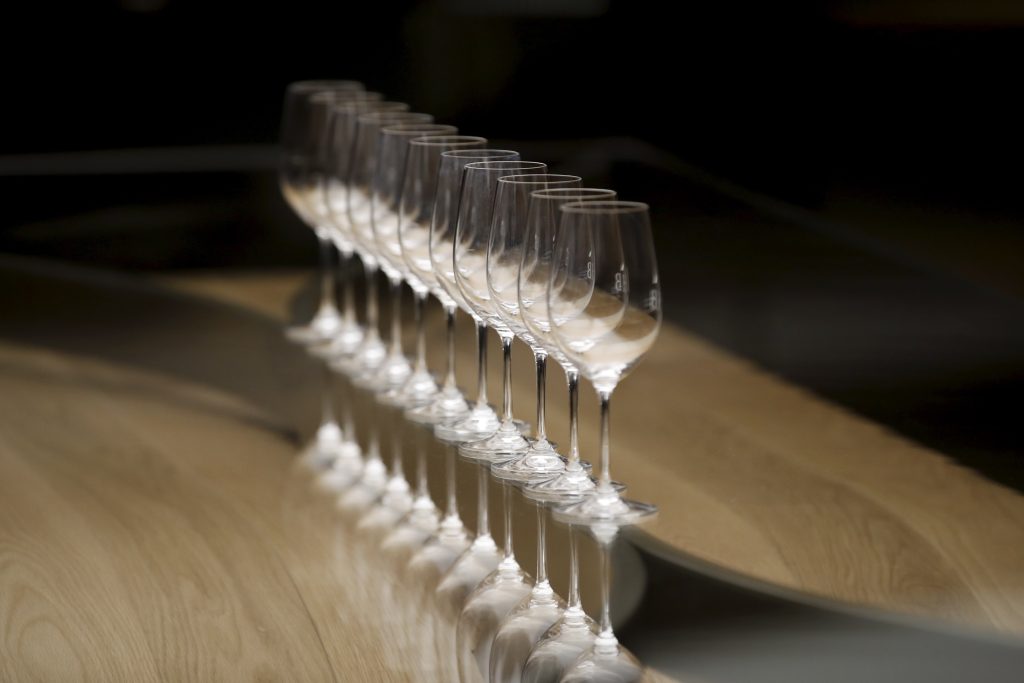
The wine’s flavour is celebrated, a “pure, gripping flavour” with “an obvious focus on fruit – red berries and blackcurrants – and freshness”, a “fleshy scent of red peony” and a juice that is “creamy on the palate, (which) reveals the velvety caress characteristic of Haut-Bailly”. English speakers are no less enthusiastic, qualifying the wine as”so savoury and moreish“ and ”so graceful and opulent with perfumed redcurrants, darker berries, dried herbs, flowers and tobacco“. ”It waltzes out with showy scents of boysenberry preserves, stewed plums, and fruit cake, followed by underlying suggestions of Indian spices, menthol, graphite and lavender, with a hint of cardamom“. Reading these comments makes you salivate and lets you feel the happiness: the emotion of the tasting is there to be shared.
The length charms and surprises, as this is ”a wine of rare persistence“ offering ”sensational freshness, salinity and elegance“ and ”plenty of hidden depths“, as ”the full-bodied palate is rich and seductively plush, with layers of black fruits and exotic spices, plus mint and floral sparks, finishing long and fragrant“ – an exceptional length: “It boasts more grip and persistency on the finish than its peers, with a residual subtle pinch of black pepper”.
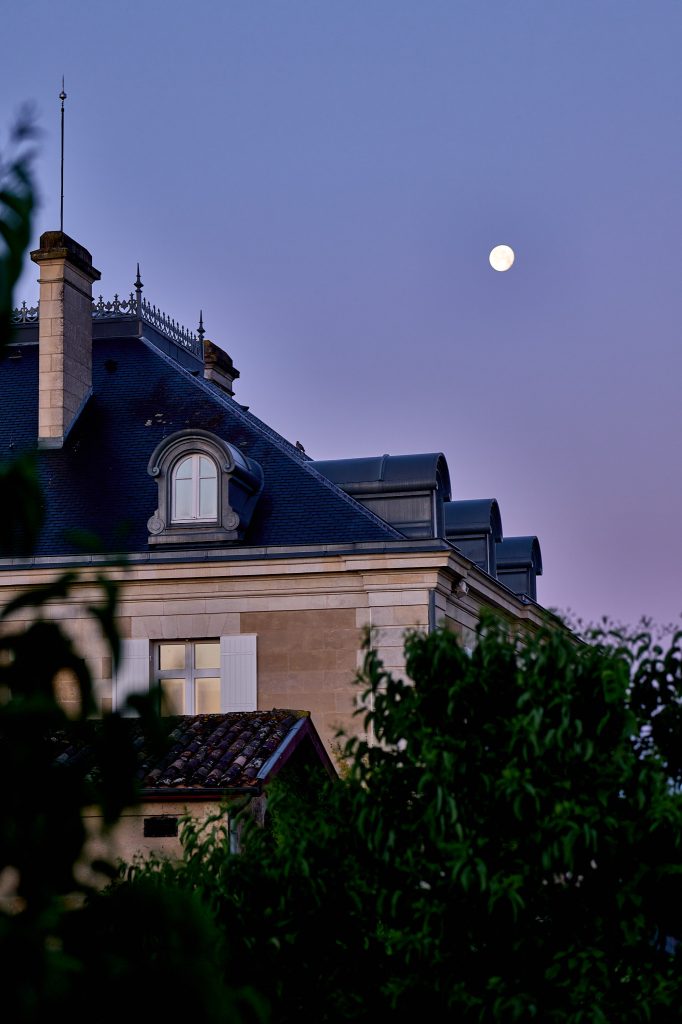
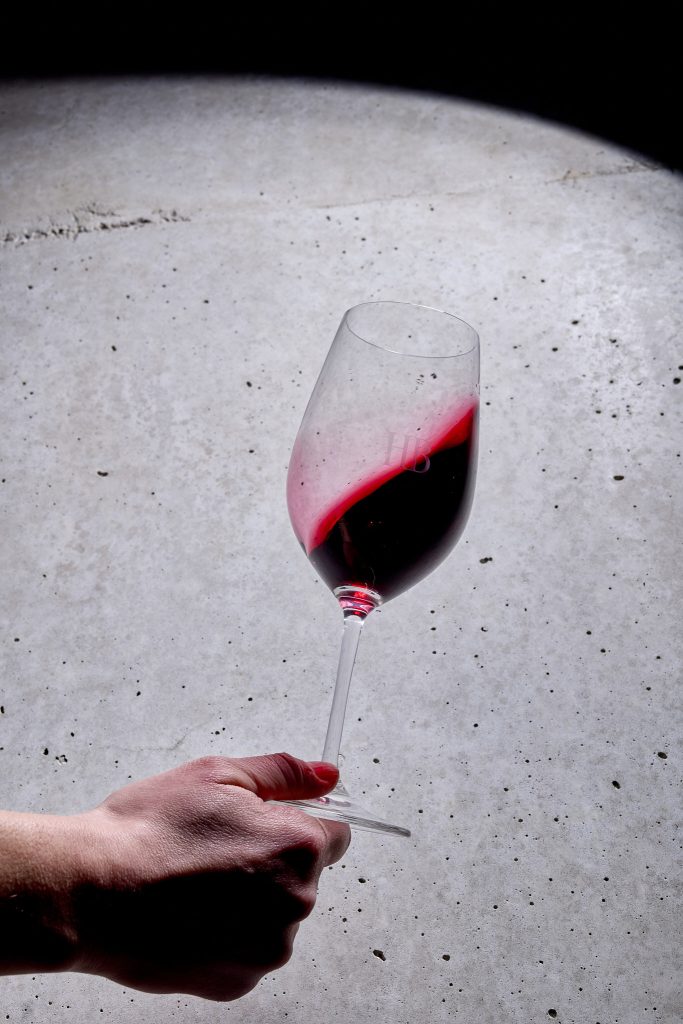
Majesty, meaning a grandeur and nobility that command respect: French critics celebrate the wine as a “royal road”, “fullness and serenity”, “a powerful, deep, invigorating Haut-Bailly…with vigorous tannins”, “a great success, which confirms that less massive vintages are wonderfully suited to Haut-Bailly”… or again, in Shakespeare’s language, “a very serious wine”, “sophisticated”, proving if proof were needed that “this ranks as one of the standout wines in Pessac-Léognan, perhaps in Bordeaux itself. Outstanding.”
The distinction that is the hallmark of the estate’s greatness signs the prais: “once again, Haut-Bailly!” and its legendary “distinguished flavour”, through which “the identity of the cru is perfectly transcribed”, that of a Grand Vin that “remains true to its identity: bravo, superbly elegant” with “this undeniable sense of class and finesse that define this château”, “a wine that represents the new spirit of Bordeaux: understatement and class.”
In this way, the dominant semantic fields create identity patterns that position the estate at the centre of Haute-Viticulture. Just as there are the “Maisons de Haute Couture”, there is on the Left Bank a temple of winemaking that the new Haut-Bailly winery embodies, delivering exceptional wines in terms of sovereign elegance, singular style and finesse.
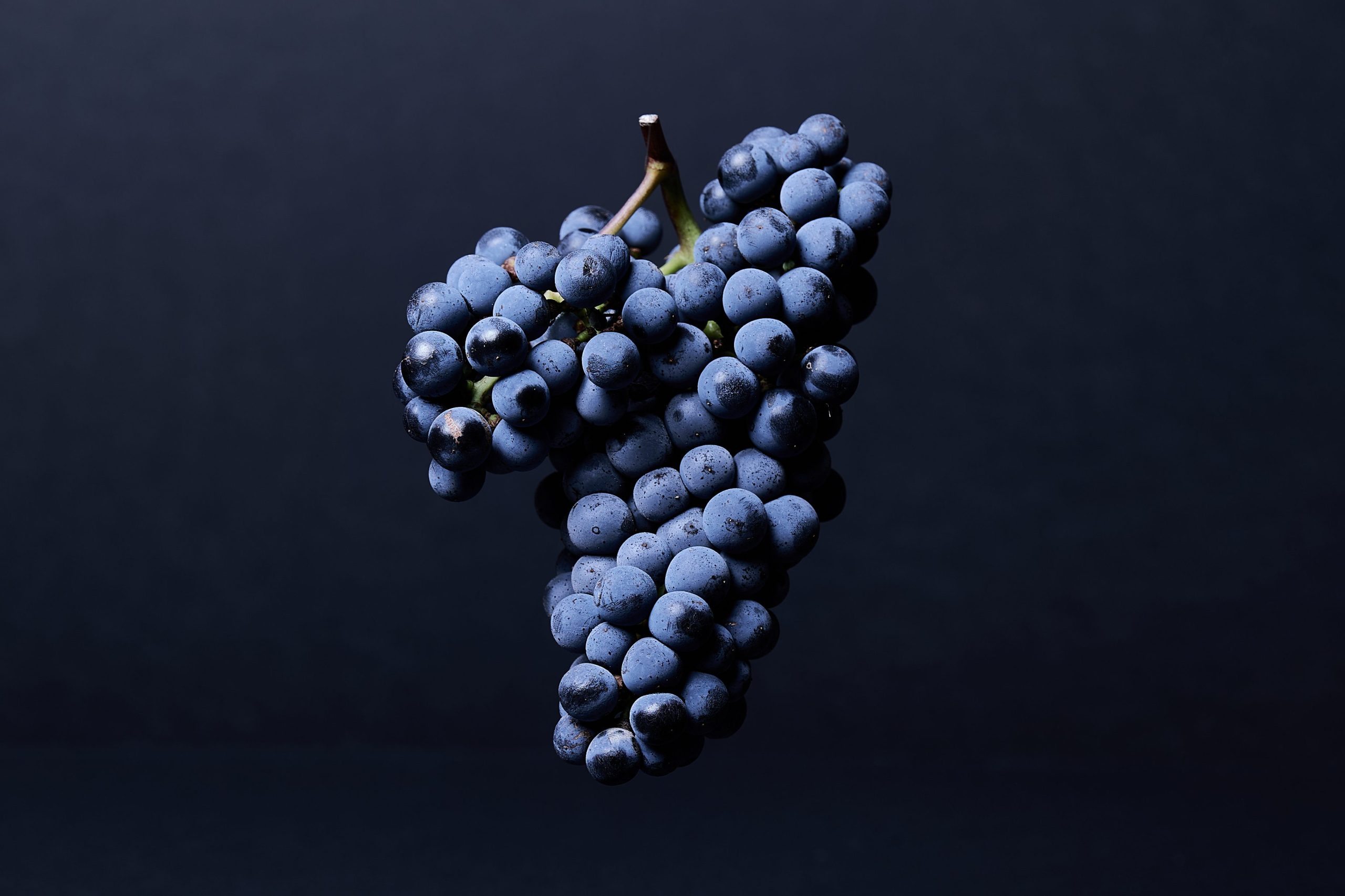
Haut-Bailly, as a subject – with its wine, its terroir, and its people – inspires poetic and precise prose
It is striking to see the extent to which the style of the tasting notes is no less incomparable than the style of the Grand Vin. It seems that, inspired by the quality of the welcome extended to them, the endearing beauty of the surroundings, the wines they taste, the food they enjoy at the Table Privée – in short: their experience, visitors to Haut-Bailly – who always say they are welcomed as friends of the house, not just guests – write about their overall experience in a way that feels both sculpted and sincere. The words captured by these wine lovers are the true expression of Haut-Bailly, in 2023 as in previous years.
In their own way, each of the commentators expresses themselves with sensitive care, clearly concerned with the precision of the terms used, attentive to the verbal aesthetics and the register of language chosen to talk about the estate and its wine. We would like to thank them all.
*Pascal Beucler, our semiotician
**Jane Anson, Yves Beck, Michel Bettane, Bernard Burtschy, Yohan Castaing, Louis-Victor Charvet, Pierre Citerne Béatrice Delamotte, Jeb Dunnuck, Antonio Galloni, Georgie Hindle, Chris Kissack, James Lawther, Jeff Leve, Ella Lister, Lin Liu MW, Alexandre Ma, Neal Martin, Clio Perrin, Lisa Perrotti-Brown, James Suckling, Jean-Marc Quarin, Adrian van Velsen, Tjark Wisse

